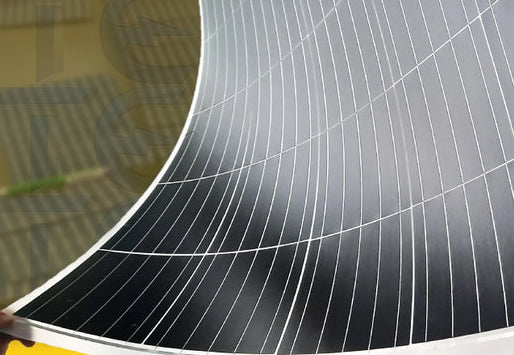
Solar power has been progressively becoming more and more popular over the past few decades. Countries and companies alike have seen the potential in the technology and spent lots of time, effort and money to develop the technology into a technology usable by many all around the globe. The investment poured into this technology has seen the efficiency of solar panels increase drastically and the price per metre squared of solar panels to plummet. This has allowed solar panels to be profitable in many situations. Whether you are a power plant manager who uses a field full of solar panels to generate and sell electricity, or an individual homeowner who uses the panels to offset some of their household energy usage. This technology is a great source of renewable energy and is absolutely crucial to the phasing out of unclean energy sources, replacing these with cleaner, greener sources of energy.
Solar Energy
There is a reason solar is such a promising source of renewable energy. The amount of energy in the form of solar radiation (visible and infrared light), that is energy emitted from our sun, is extraordinarily high when compared to our existing sources of energy. Within the space of a year, it is estimated that the surface of the earth is struck with approximately 23,000 TeraWatt years of energy! Now I do understand this is a difficult number to get your head around, after all there is not much reference of such large numbers.
We will first have a look at how much power the world uses in a year. All of the world, with all of its people and industrial activity included, uses only 18.5 TeraWatt Years of energy over the space of a year! So with the solar energy that lands on earth you could meet the world's energy needs 1,243 times over! This is great news for solar, especially when you look at the amount of energy generation possible from other, finite sources. It is estimated that the most plentiful, finite energy resource available on the planet: coal; a heavily polluting fuel could, if all of the coal on the earth was burned, produce 830 TeraWatt Years.
Photovoltaics
So the main question involved in the solar energy industry is: how can this energy be collected and converted into electricity? Well there are a number of solutions to this problem, however the most popular by far is the use of solar panels. Simply put, these panels work by utilising the Photovoltaic effect to make electrons in the specially selected material of the panel move when they are hit by photons (waves of light). Movement of electrons is more commonly known as electricity, hence power is generated! If you'd like to learn more about how solar panels work please do follow this link: Basic Steps in Solar Energy Generation and Transimmition
The most cost effective way to produce solar panels, particularly for domestic settings is to use specially prepared sheets of Silicon to produce solar cells, combining these cells to produce a panel. Although this material is not the most efficient material available for power generation as solar panels go. The abundance of Silicon in the Earth's crust brings the cost of using this element in solar panels down significantly when compared to the more efficient solar panels. This good balance of cost versus efficiency has led to these panels being widely used across many industries.
Advantages of Flexible Solar Panels
A downside of silicon cells used in most solar panels is the fragility of the cells. This means that if the cell experiences any high forces or any bending it is likely to shatter or break. This is why solar panels, like the ones you might see on the roof of a house, usually have a strong supporting structure to make sure the cells cannot be bent or damaged. This supporting structure is conventionally made from a metal alloy such as steel or aluminium alloy. As a result a large amount of extra weight is added to the panel. This limits the use cases for the panels as the heavy panels are more difficult to transport and mount.
Luckily there is an alternative solution to the more fragile panels being developed. Flexible solar panels are a development on traditional solar panels that has become a more popular option in recent years. The flexible panels are more resilient than their mounted counterparts, mounted in tougher, fracture resistant fibreglass reinforced plastic instead of heavy metal and fragile glass. The TESUP flexible solar panels are so robust that you could even walk on them! TESUP flexible panels are also much lighter than traditional panels weighing only 2kg!
With these benefits, the TESUP flexible solar panels are very portable and could be taken to events to charge phones or power lights! What's more, the waterproofing and saltwater resistance of the panels mean they could easily be applied to a boat or even a van to generate power on the go! With such a promising technology to hand, TESUP has recently invested in improving flexible solar panel manufacturing capabilities. The company is developing its in house manufacturing to ensure TESUP has control over all steps in the manufacturing process and can deliver the best product TESUP can!
This development has seen TESUP looking to expand its manufacturing base, bringing a new location, especially focussed on solar panel manufacture into the TESUP fold, allowing TESUP to bring you higher quality products with TESUP quality control all the way through the production process! According to Advanced Market Energy, solar flexible solar panels are only going to increase in popularity over the coming years as people become more interested in reducing their impact on the planet and its environment. Make sure you are ahead of the curve, have a look at TESUP's flexible solar panels and see what you think.
